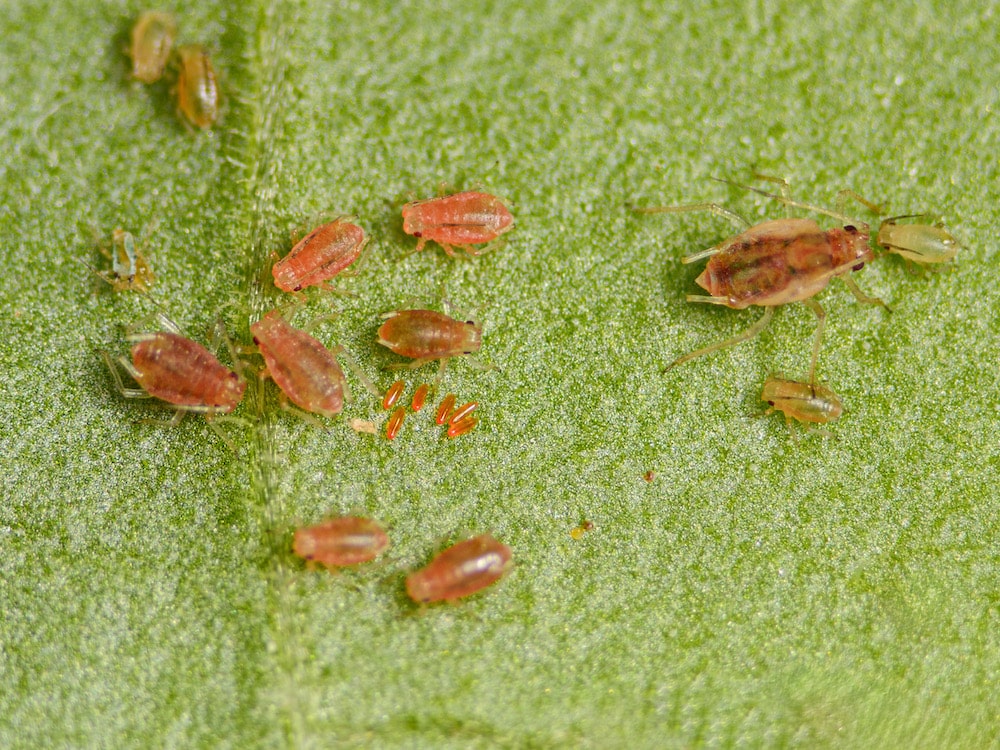This amazing midge was first characterized by researchers in Germany. It was a contaminant in an Aphidius trial. The trial was a failure because all of the Aphids disappeared. The researchers noted the presence of Aphildoletes midge and larvae but could not believe that they could be so effective. Subsequent experiments proved that Aphidoletes application is an excellent aphid control. When not cold stored, Aphidoletes has a tremendous searching ability, capable of finding individual Aphids within the crop. In our prevention method, only one release point per hectare of protected crop is needed for Aa to find single aphids.
Cycling both indoors and outdoors readily occurs if enough Aphids are present. Aphidoletes overwinter by diapause, triggered by short days. Diapause can be avoided in protected crops by supplementing with very low intensity light, such as adjacent street lights, walkway lights left on, LED garden walkway lights, or a string of Christmas lights suspended near the area.
The field or “garden” strategy is inoculating hot spots with an appropriate number of Aa. If enough aphids are present, Aa will multiply 20 fold after two or three weeks, spreading into adjacent plants and greenbelts. We find that outdoor applications are effective up to 5 years, after which, due to dilution, more Aphidoletes may be required.
Release strategies
- Greenhouse prevention: place the open tray at a neutral release point, using this release point every time. It should be off the floor, and protected from watering sprays or direct sunlight. Usually placing it on top of an electrical panel works well, or bolting a flower pot on a post facing North, above the crop.
- Outdoor inoculation: release an appropriate number in an aphid hot spot. Smaller, timed releases are more effective than one large release, but it will take longer to get the aphids under control. In extremely windy locations or when prevailing winds are constant, favour an upwind releases.
Aphidoletes adults are nocturnal, working at dusk. They can find single aphids from 200 feet away and lay their eggs either directly on the aphid or nearby. The larvae hatch from the egg within 24 hours and begin predation immediately, each killing about 200 aphids per day. After 10 days, they fall to the ground to pupate, re-emerging in about 14 days.


